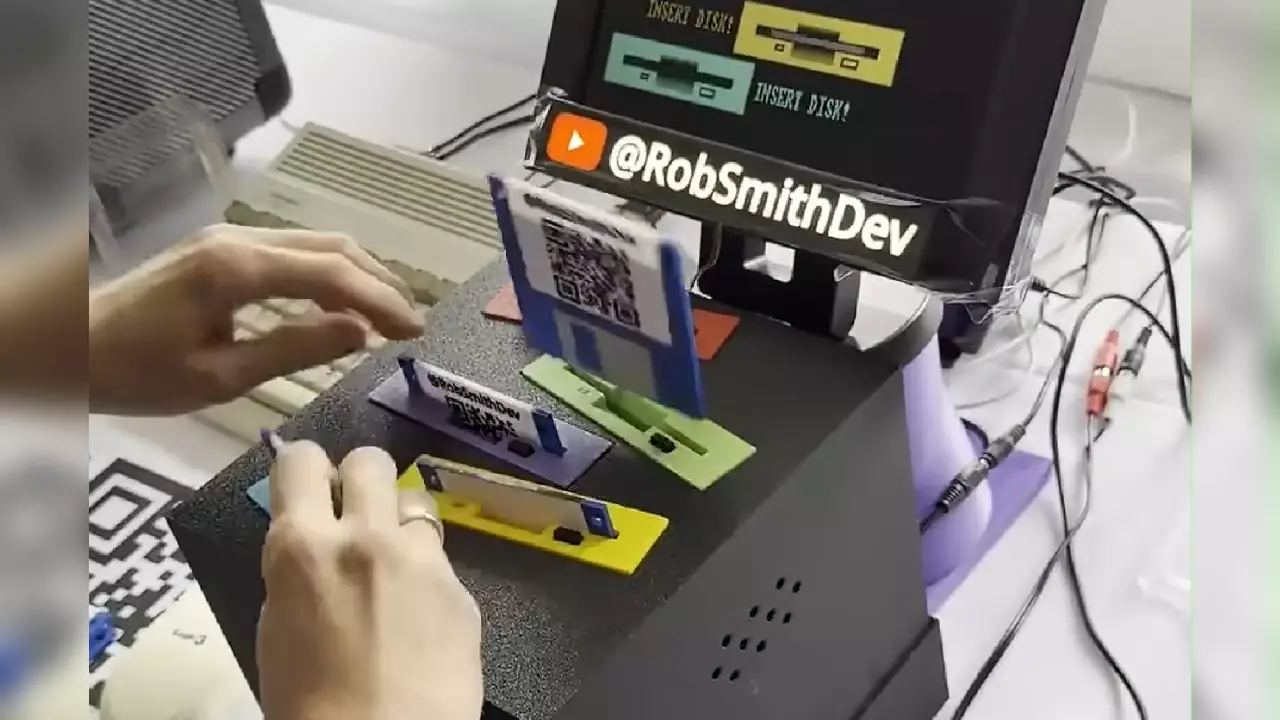In an era saturated with cutting-edge graphics and hyper-realistic gameplay, the act of innovating within retro technology might seem counterintuitive. Yet, it’s precisely this tension—between nostalgia and modern ingenuity—that fuels some of the most compelling inventions today. The recent creative endeavor involving a homemade floppy disk game exemplifies how nostalgia can be a fertile ground for innovation, especially when reimagined with modern engineering and artistic sensibilities. Building such a device isn’t merely about rekindling old memories but transforming them into a new form of digital artistry that challenges our perceptions of technology and play.
This project harnesses the familiar shape of floppy disks—a relic of the late 20th century—and morphs it into an interactive game reminiscent of the old “whack-a-mole” concept. Instead of just admiring the nostalgic appeal, the creator, Rob Smith, fuses mechanical ingenuity with software development, crafting a unique hybrid that bridges decades of technological evolution. This intersection of hardware and software underpins a broader trend: the renaissance of vintage tech as a platform for experimentation and artistic expression.
Behind the Mechanics: Crafting a Modern Retrofuturist Experience
Central to this innovation is the use of custom linear actuators—quiet yet precise mechanical parts that manipulate the disks with delicate control. By designing these actuators to gently release or press the floppy disks, Smith achieves a tactile experience that balances challenge with playfulness. This approach echoes the physicality often lost in purely digital games, emphasizing craftsmanship, patience, and physical dexterity. The visual aesthetic, achieved through 3D printing and straightforward assembly, underscores that the charm of retro tech lies not just in its functionality but in its handcrafted feel.
The software side of the project adds another layer of sophistication. Built in AMOS, a programming language tailored for Amiga computers, the code breathes life into the hardware. It orchestrates the movement of disks, triggers sound effects, and syncs with a custom soundtrack—created by Hoffman, an artist specializing in retro electronic music. The music, a pulsating drum and bass track titled “Disk Menace,” complements the frenetic gameplay, elevating the entire experience from a simple novelty to an intricate audiovisual event.
This holistic approach—blending hardware craftsmanship, software programming, and musical composition—illustrates how vintage tools can be harnessed to produce genuinely original content. It’s a reminder that innovation need not always be about creating from scratch but rather reinterpreting and repurposing what we already have in new and engaging ways.
The Cultural Significance of Nostalgic Innovation
On a deeper level, projects like DiskFight serve as cultural touchstones, connecting generational gaps through shared experiences of technology. For those who grew up with floppy disks, seeing them transformed into a gaming mechanic is a potent reminder of the rapid pace of technological change and the persistent allure of tangible, physical media. For younger audiences, it offers a window into the past while demonstrating that old tech can be more than obsolete— it can be a canvas for creative expression.
Furthermore, such inventive pursuits challenge the notion that nostalgia is merely escapism. Instead, they affirm that reverence for the past can be a launchpad for future innovation. By reimagining floppy disks as part of a modern game, the creator enshrines a cultural artifact within contemporary art, prompting reflection on the evolution of digital media, the role of craftsmanship, and the enduring human desire for playful experimentation.
In my view, this kind of retro-futuristic creativity is vital to the tech landscape. It pushes boundaries, invites new perspectives, and encourages a playful attitude towards progress. It affirms that even the most seemingly outdated technologies retain the capacity to inspire and innovate—if approached with curiosity, imagination, and a willingness to tinker.
This project exemplifies how nostalgia, when combined with technical skill and artistic vision, can produce groundbreaking results. It proves that the past still has a voice—a vibrant, inspiring voice that, when harnessed creatively, can resonate powerfully in the present and future.

